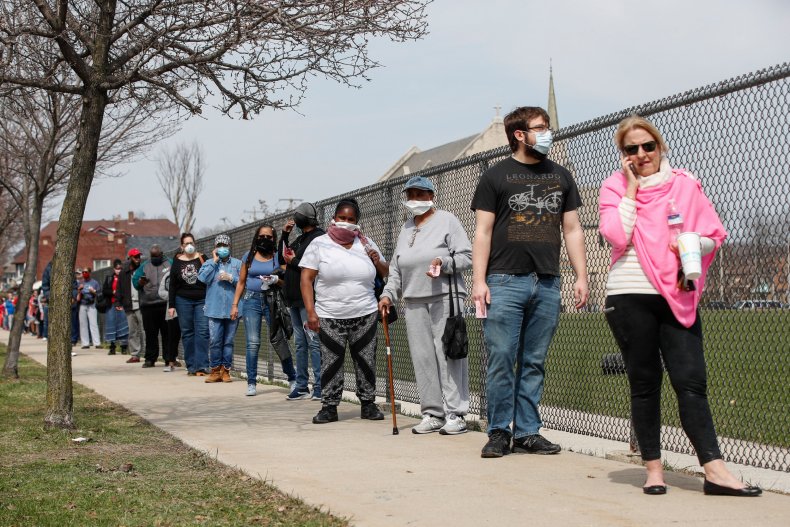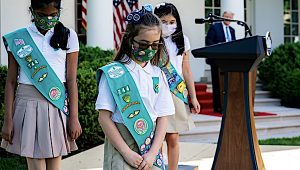A new paper from the National Bureau of Economic Research showed a link between in-person voting during the contested April primary elections in Wisconsin and transmission of COVID-19.
Researchers with the University of Wisconsin found that the election—marred by suspicions of voter suppression as the state’s Democratic governor unsuccessfully tried to postpone it—produced higher positive cases of COVID-19 in areas with more in-person voting.
The paper, published this month, follows an assessment from the Wisconsin Department of Health Services in April that 52 residents who worked at polling sites or voted in person during the primary races later tested positive for COVID-19.
“Across all models we see a large increase in COVID-19 cases in the weeks following the election in counties that had more in-person votes per voting location, all else equal,” the researchers wrote. “Furthermore, in one to three weeks following the election, we observe a decreased number of new positive COVID-19 cases in counties with relatively more absentee votes.”
The study observed that an increase of 100 in-person voters, on average, at polling sites in a given county translated to a 3.5 percentage point increase in the rate of positive tests countywide in the weeks following the election.
On the other hand, an increase of 10,000 distributed absentee ballots, total, was correlated with a fractional decrease in the rate of positive COVID-19 tests.
Ben Wikler, chairman of the Democratic Party of Wisconsin, said that President Donald Trump and the state’s Republican Pary bore “full responsibility” for the increase in cases traced to in-person voting on April 7.
“Grasping for power at any cost, the GOP thought they could score a political victory by forcing people to choose between staying safe and risking their lives to vote,” Wikler told Newsweek, adding that he believed the Republican Party was in “serious trouble come November.”
The correlation still held true even after the study’s authors removed Milwaukee County from the data, where particularly beleaguered election infrastructure resulted in long lines at the City of Milwaukee’s five polling places.
Around 38 percent of the state’s registered voters applied for an absentee ballot for the April 7 presidential primary. All voting-eligible citizens in Wisconsin are able to request an absentee ballot in advance of an election.
But behind the scenes, both political parties were squaring off in contested bids to control the administration of the election, primarily because it also served as the general election for a key seat on the Wisconsin Supreme Court. The Democratic-favored candidate won that race.
In an ill-fated attempt to ensure health concerns did not discourage voter turnout, Governor Tony Evers, a Democrat, had issued an executive order postponing the vote to June. But a divided Wisconsin Supreme Court blocked the move on the eve of Election Day, plunging the process into further chaos.
The fight over election administration and access to absentee balloting in Wisconsin mirrors the fight at the national level, where voting rights advocates have expressed concerns about the state of public health during the upcoming presidential election in November.
According to a report published in March by the National Vote at Home Institute, 16 states restrict access to absentee ballots for the average voter. However, several states have taken executive action to expand mail-in ballot access. For example, Governor Andrew Cuomo of New York, where absentee ballots are only distributed for constitutionally prescribed reasons, issued an executive order effectively expanding access to mail-in ballots for all New Yorkers.
Research has linked absentee voting to increases in voter turnout in various elections.
Prominent conservatives activists and Republican officials have spoken out against expanding mailed-ballot access, alleging that the process would favor Democrats or lead to increases in fraud. The research, however, shows it does not appear to provide a distinct partisan advantage.



















